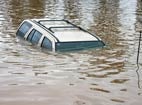Happy U.S. National Severe Weather Preparedness Week! I’d have sent a card, but I couldn’t get to the post office due to the icy road conditions and five-foot snow drifts. Let’s hope the awful winter weather is behind us. In any case, winter is followed by spring, summer and fall, and each of these seasons also has the potential to cause weather-related stress and hardship.
Preparing is important, but is also a bit of a hit-and-miss game: Severe weather is selective in its destruction, and precisely what type of weather will cause the damage is impossible to predict. As with many business continuity/disaster recovery (BC/DR) issues, the best approach is to prepare as well as possible from a structural point of view and hope that if an emergency occurs, those steps will help ameliorate the problem.
Providing power is one of the most vital generic steps. Continuity Central has reposted a long list of power contingency suggestions from the Diesel Technology Forum. The top five ideas: Assess the risk, install a standby generator, store a sufficient amount of fuel, maintain the equipment, and consider using a contractor to reserve a generator if an event occurs.
A piece from the British site TechRadar Pro makes the important point that progress has been made. A byproduct of the explosion of mobile technology is that the workforce has decentralized itself. The writer says that 90 percent of Polycom workers (from the context, those in the UK) can work from home. But the figures in the piece don’t hugely differ from those in the U.S.:
Over the last decade, the number of home workers has doubled from 21% to 40%, and the number of employers offering flexible working arrangements for parents has increased from 28% to 44%, so businesses are already moving in the right direction.
Having workers who aren’t all in one central location can be helpful in the event of a disaster. Business can more easily continue after a tornado or flood when the workforce is distributed around other areas—provided that data has been backed up elsewhere and is accessible via the cloud or other means. Thus, having a complete BC/DR plan in place and fully tested is of the utmost importance.
In the U.S., at least one state, Illinois, is following up the National Severe Weather Preparedness Week with further education on weather-related disasters. They are extending the weather preparedness message through the entire month. The WIFR story on the Illinois initiative pointed out just how much damage and dislocation was caused by the weather last year:
Illinois experienced 54 tornadoes in 2013, which resulted in eight fatalities, 187 injuries and widespread destruction to more than 2,000 homes, businesses and public property. Twenty-five of those tornadoes, including two EF 4 tornadoes, occurred on Nov. 17. Historic flooding also impacted nearly half of Illinois counties last spring. Thirty-five counties received federal assistance to help people affected by the flooding and 40 counties received federal aid to help local governments recoup flood-related expenses.
The release describes a severe weather guide that was prepared by the National Weather Service and the Illinois Emergency Management Agency, but it shows that progress is being made both pre- and post-event to both warn of disaster and help those affected to recover.
Severe weather preparation falls within the confines of DR/BC. Many of the rules are constant throughout the entire category: Organizations must know what they are going to do well before the bad weather hits, they must have equipment and detailed processes in place, they must keep employees informed and engaged, and they must be vigilant.



